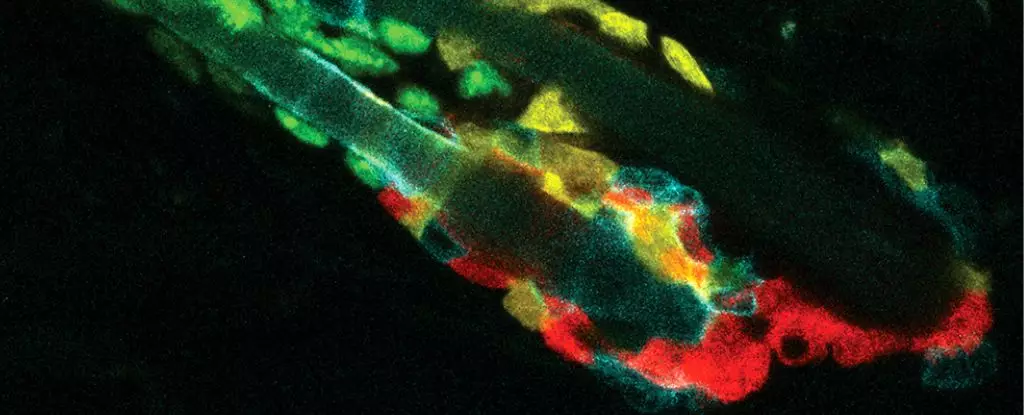The human body is a marvel of biological engineering, functioning as a complex ecosystem where cells constantly regenerate, repair, and sometimes—alarming though it may sound—consume each other. Recent research has unveiled a remarkable mechanism within mammalian biology that highlights an unexpected facet of cellular interaction: the phenomenon where living stem cells essentially ‘eat’ their deceased neighbors to maintain order and homeostasis. This article delves into this astonishing process, outlining its implications for cellular health, immune response, and future research directions.
In the human body, approximately one million cells die every second—a staggering number that emphasizes the continuous cycle of life and death at the microscopic level. Normally, when cells die, they are expected to be cleared away by immune cells such as macrophages. However, what if the neighboring healthy cells could step in earlier, effectively “cleaning up” the detrimental aftermath of cellular death? Researchers at Rockefeller University are shining a light on this query, showing that stem cells in mouse hair follicles adopt a cannibalistic approach for corpse disposal.
This process plays out primarily in the hair follicle stem cells (HFSCs) of aging mice. Previous research established that HFSCs begin to die off as the hair follicle ages, creating a need for efficient clearance methods. Yet, the current study reveals that contrary to expectation, it is the surviving HFSCs that take the initiative to remove the dead cells around them before macrophages can react.
The cellular cleanup operation is not haphazard; it is governed by a highly coordinated system that hinges on the sensitivity of specialized receptors located on HFSCs. These receptors are attuned to specific signals related to cellular demise. One receptor detects a lipid signal emitted by dying cells—essentially a “help me” message—while another receptor interacts with a growth-promoting substance known as retinoic acid released by neighboring healthy cells. This dual receptor system functions like an on-off switch; when a dead cell is detected, cleanup operations commence. Once the area is cleared, the depletion of lipid signals tells the stem cells to revert to their primary roles in cultivating the hair follicle’s health and functionality.
This elegant mechanism is remarkable, strategically preventing inflammation and thwarting an overactive immune response. It also emphasizes a form of interdependence among cells that is typically overlooked in discussions about cellular health and immune function.
The findings derived from this research not only shed light on how stem cells participate in their surroundings but also hint at the greater role they may play in managing cellular ecosystems throughout diverse tissues in mammals. The concept of cellular ‘cannibalism’ poses a provocative question about adaptability; could this behavior be part of a larger survival strategy that promotes longevity and vitality in tissue functions?
The ability for HFSCs to consume their dying neighbors could serve multiple purposes, from recycling cellular components for energy to preserving the integrity of the stem cell pool essential for hair production. As the researchers surmise, understanding how this system works could pave the way for innovations in regenerative medicine—a field increasingly focused on harnessing the powers of stem cells for healing and repair.
While this study primarily centers on hair follicles in mice, there are compelling implications for broader biological contexts. If the mechanisms observed here hold true for other tissues and cell types, the research could redefine our understanding of cellular interactions and immune response strategies. Future investigations will be crucial to explore whether these processes are universal across various types of mammalian cells.
The findings illuminate a fascinating aspect of cellular life, where death and survival are intricately woven together in an ongoing dance of maintenance and recycling. This discovery not only challenges our preconceived notions of stem cell behavior but also opens the door to exciting new avenues for research, ultimately informing our quest for better health and longevity. As scientists continue to unravel the complexities of these cellular systems, we may find new methods to enhance cellular efficiency and treat degenerative diseases effectively.


Leave a Reply